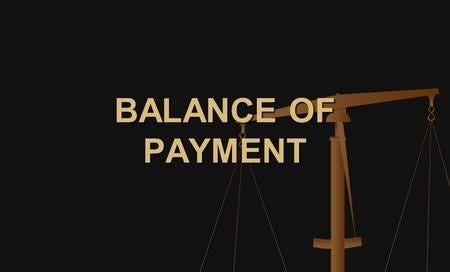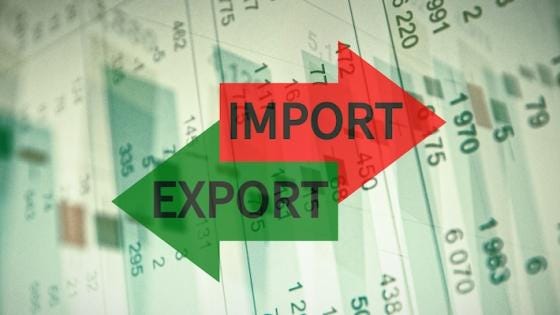🛸 Balance of Payments Crises
Examine case studies of balance of payments crises and their impact on currencies, markets, and policy responses.
💡 New on Macro Mornings? Start here
🛸 Macro Deep Dives is created for those who crave in-depth understanding of macroeconomic trends.
🧠 7 TOP READINGS - May 2025 Macro Intelligence Report
👉 The complete PDF edition with insider macro strategy - grab it now for just $23.
May 1, 2025 - First Negative GDP Since 2022
May 3, 2025 - $2 Trillion Safety Net Just Vanished
May 6, 2025 - Why the Next Big Global Shift Could Start Now
May 11, 2025 - The Illusion of Calm
May 15, 2025 - When Smart Money Panics
May 20, 2025 - The Rally No One Understands
May 22, 2025 - The Illusion of Safety
Dear all,
Balance of payments (BoP) crises have long haunted both emerging and developed economies, leading to sharp currency devaluations, market turmoil, and drastic policy interventions.
These crises occur when a country cannot finance its current account deficits or service its external debt.
Understanding past BoP crises can help us recognize warning signs and prepare for potential market disruptions. 🌍💼
Let’s explore how balance of payments crises unfold, examine historical case studies, and discuss their impact on currencies, markets, and policy responses. ⏳
What Triggers a Balance of Payments Crisis?
A BoP crisis typically occurs when a country’s foreign exchange reserves are depleted due to sustained current account deficits, capital flight, or mounting external debt.
Common triggers include overvalued currencies, excessive foreign-denominated debt, deteriorating trade balances, and sudden loss of investor confidence due to political instability or poor economic policies.
Historical Case Studies of BoP Crises
The Asian Financial Crisis (1997-1998) 🌏
In the mid-1990s, countries like Thailand, Indonesia, and South Korea maintained fixed exchange rates pegged to the U.S. dollar.
These economies borrowed heavily in foreign currencies and attracted significant foreign investment.
When exports slowed and currencies came under pressure, speculative attacks triggered massive devaluations.
The Thai baht devalued by over 50%, the Indonesian rupiah fell by nearly 80%, and South Korea required a $58 billion IMF bailout.
Stock markets plunged, unemployment soared, and governments were forced to implement austerity measures.
The Argentine Crisis (2001-2002) 🇦🇷
Argentina’s currency peg to the U.S. dollar in the 1990s led to an uncompetitive economy and excessive borrowing.
When foreign reserves dwindled, Argentina defaulted on $95 billion of debt-the largest sovereign default at the time.
The peso lost 70% of its value, bank runs caused financial chaos, and the economy contracted by 10.9% in 2002.
The Turkish Lira Crisis (2018) 🇹🇷
Turkey’s reliance on foreign-currency debt, coupled with political instability and poor monetary policy, led to a sharp depreciation of the lira.
The currency lost 30% of its value within months, inflation surged to over 20%, and the central bank was forced to raise interest rates to 24%.
Impact on Currencies and Markets
During a BoP crisis, currencies typically experience rapid and severe devaluations.
These devaluations increase the cost of servicing foreign debt, exacerbate inflation, and erode purchasing power.
Stock markets in affected countries often collapse as investor confidence evaporates.
During the Asian Financial Crisis, the Thai stock market fell by 75% in dollar terms.
In Argentina, bank runs led to a collapse of the financial system, wiping out savings and investments.
Policy Responses to BoP Crises
Governments and central banks often respond to BoP crises with a mix of currency devaluation, interest rate hikes, austerity programs, and IMF bailouts.
These measures aim to restore balance and confidence but can result in painful economic contractions and social unrest.
Lessons for Investors
Understanding BoP crises provides valuable lessons for investors.
Diversification helps mitigate the risks of country-specific crises, while safe-haven assets like gold, U.S. Treasuries, and the U.S. dollar tend to perform well during periods of turmoil.
Watching for early warning signs, such as rising current account deficits and declining foreign reserves, can help investors anticipate potential risks.
How I’m Positioning for These Risks
To protect against potential BoP crises, I maintain a diversified portfolio with exposure to developed markets, safe-haven assets, and gold.
Gold remains a reliable hedge during periods of currency devaluation and market volatility.
I also favor short-term bonds in countries with sound economic policies and low foreign-currency debt. Keeping a portion of investments in U.S. dollars provides stability and liquidity during turbulent times.
By staying informed and proactive, I believe it’s possible to navigate the risks associated with balance of payments crises while preserving and growing wealth. 🚀
🔒 Bonus Lesson to Remember
Balance of payments crises remind us that economic imbalances and poor policy choices can have severe consequences.
Diversification, vigilance, and strategic positioning are key to protecting wealth in uncertain times. 🌍
For me, understanding these crises helps us recognize risks early and respond wisely.
By preparing for potential disruptions, we can safeguard our investments and seize opportunities amid turmoil. 💼📊
Alessandro
Founder of Macro Mornings
⭐️⭐️⭐️⭐️⭐️
What You’ll Get by Joining Macro Mornings Premium
🔸 Regular deep dives into economic indicators and geopolitical developments shaping today’s markets.
🔸 Exclusive, high-quality macro investment opportunities that focus on long-term growth, diversified risk, and the potential to outperform during various economic cycles.
🎁 Exclusive Offer: 30% OFF for Life!
Becoming a Macro Investor Premium, You’ll Gain Access to:
Well-researched insights help you make smarter and more informed decisions .
All the tools you need right at your fingertips to build, track, and grow a resilient portfolio - helping you retire earlier and live life on your own terms.
Stop guessing, start investing with confidence, and enjoy a life free from financial constraints.
👋 Read my Financial Story
✍ FREE
📚 Get your E-book FREE 👉 10 Simplified Strategies for Investors
🎁 Get your Mentorship FREE here
🏆 PRO
🔏 Become a Macro Investor here | 💰 30% Off for Life - [🔥 Only 6 Spots Left! 🔥]
🔑 Get your Mentorship PRO here
📚 The Art of Financial Freedom 👉 51 Macro Lessons to Success Your Future
💻 SOCIAL
🎙 PODCAST
🙏 YOUR VOICE MATTERS - Help me
📝 TrustPilot - Leave a review and share your experience - I’d be truly grateful!
📣 Feedback Form - Help me improve Macro Mornings by sharing suggestions!
Disclosure
This material is not intended as an offer or solicitation for the purchase or sale of any financial instrument. This material has been prepared for informational purposes only. Any forecasts contained herein are for illustrative purposes only and are not to be relied upon as advice or interpreted as a recommendation.






